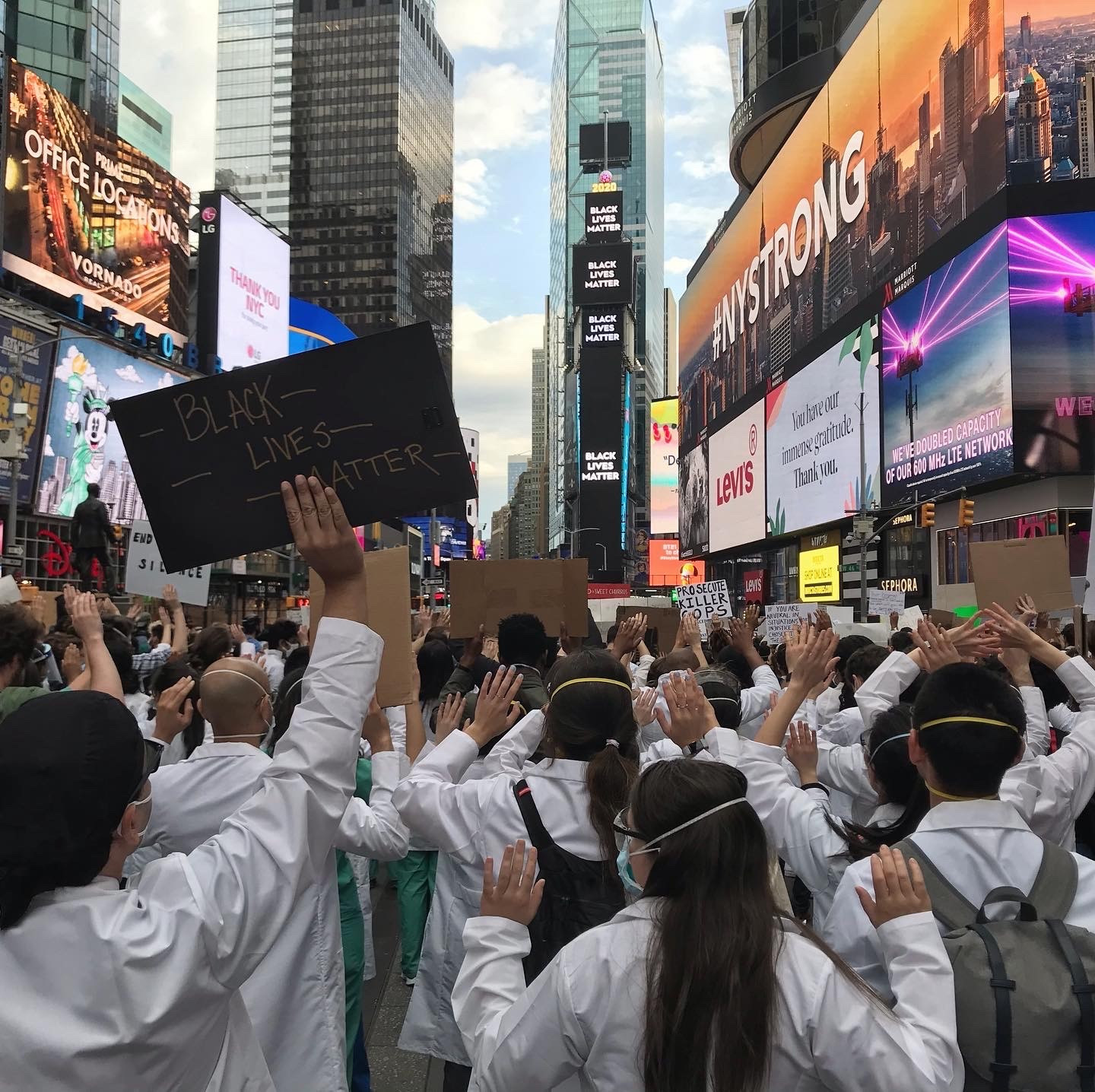
Ahmaud Arbery, Breonna Taylor, George Floyd, and Tony McDade. Four Black Americans were violently killed in recent weeks and racism cannot be denied as a factor. This comes in the setting of the global COVID-19 pandemic which has revealed the striking disparities for Black and Latinx Americans. There are those who wish to ignore race and blame socioeconomic factors and poverty, but to quote a recent article by Professor Ibram X. Kendi, “racism distinguishes black poverty from white poverty and makes black poverty more vulnerable to a lethal contagion.”
In my role as the Director of Health Disparities Education at NYU Grossman School of Medicine, I sit in monthly meetings with our faculty and our medical student course liaisons and hear the student feedback on our curriculum. When it comes to topics of health equity and social justice, the students regularly ask for more: a deeper understanding of why these disparities exist. In one particularly striking example, a slide intended to reference the racial disparities in diabetes and obesity noted the “interaction of genes and the environment” was responsible and mentioned that this “predisposition is uncovered … in response to lifestyle, behavior patterns, and food choices.” What our learners heard was “if Black people would eat more apples, they wouldn’t be in this situation.” We know the answer is far more complex, but that one slide to convey this complexity is simply not enough.
I cannot speak to the depth of knowledge of the teacher who presented this slide, though I feel confident it was written with the best of intentions. Racial justice and understanding of the health impacts of structural oppression were not a part of my (or many other health professional faculty’s) health professional education. This instructor was likely given 50 minutes to present approximately 100 slides and include the epidemiology, pathophysiology, and targets for therapy of type 2 diabetes, a condition that learners entering literally any specialty in healthcare will need to know about. He likely pulled out an old slide, with data pulled from an old article or textbook, and assumed this was sufficient. But in a single slide, myriad messages were conveyed explicitly and implicitly, and many were likely misinterpreted.
Every learner comes to their health professional education starting from a different place and will, therefore, take different messages from a slide like the one mentioned above. Some students will assume that health disparities are driven by genetic or biological differences between races, but we know that race is a social construct. Some believe that racial disparities are solely the result of different behavior, education, or social standing between different people of different races. Some understand the complex interplay between identity, oppression, and social factors that lead to health inequities. It is our responsibility, now more than ever, to ensure that all of our learners understand this complexity.
The truth is that many of our learners have a much stronger background in topics of social justice than we do. They are much more likely to have been taught about or have discussed systemic or structural oppression in college than their faculty who are one or more generations older than they are. A new article in Academic Medicine written by five second-year medical students from the University of Washington challenges health professions educators to identify the history and impact of racism explicitly in our curriculum and remove epidemiology and heuristics based on data founded in racist ideas.
They are right, of course. This change is badly needed, but it is no small task. Health professional programs are traditionally taught by those who went through health professional programs. We studied biology and chemistry and physics to ready ourselves to learn about pharmacology and pathophysiology. Too few of us are experts in health equity.
Another major obstacle is that time in the curriculum is limited. The addition of content in one area means a deletion of something in another; a “zero-sum game.” But I believe we are up to the challenge. We can identify what needs to be fixed and we can incorporate what is missing. It will not be easy. We need to promote cultural humility and welcome student critique as the feedback we need to hear, as we too are lifelong learners. Further, we must intentionally seek out and incorporate the voices of faculty from communities of color, without taxing them to do the work of health equity alone. Finally, we need to be critical of old ideas that we have learned are not as true as we once believed. Diversifying our curriculum means cultivating a critical lens that removes many subtle but racist ideas that seem fundamental in medicine, and it will require the help of medical historians, sociologists, and many others.
Recently, I was appointed to lead a task force of educationalists, clinicians, and students to revamp the medical school curriculum on health disparities and social determinants of health. It is an exciting task and an opportunity I have hoped for over the past few years. It is also a daunting one. The overarching agenda for this task force and a major part of my project as a Macy Faculty Scholar is to review and revamp the curricular elements involved in health equity and propose an evidence-based assessment program. Once we make these changes, how will we identify that learners have an understanding of the drivers of health inequity? Assessment drives learning and they will likely need to develop in tandem. Written tests will need updating, simulations will need to be augmented to include elements that reflect the diversity in our patients and the skills to care for them, and critical reflections will be needed to understand our learners’ perspectives.
Our goal is to ensure that our learners understand and are prepared to lead us to the next steps towards equity in health for all of our patients.